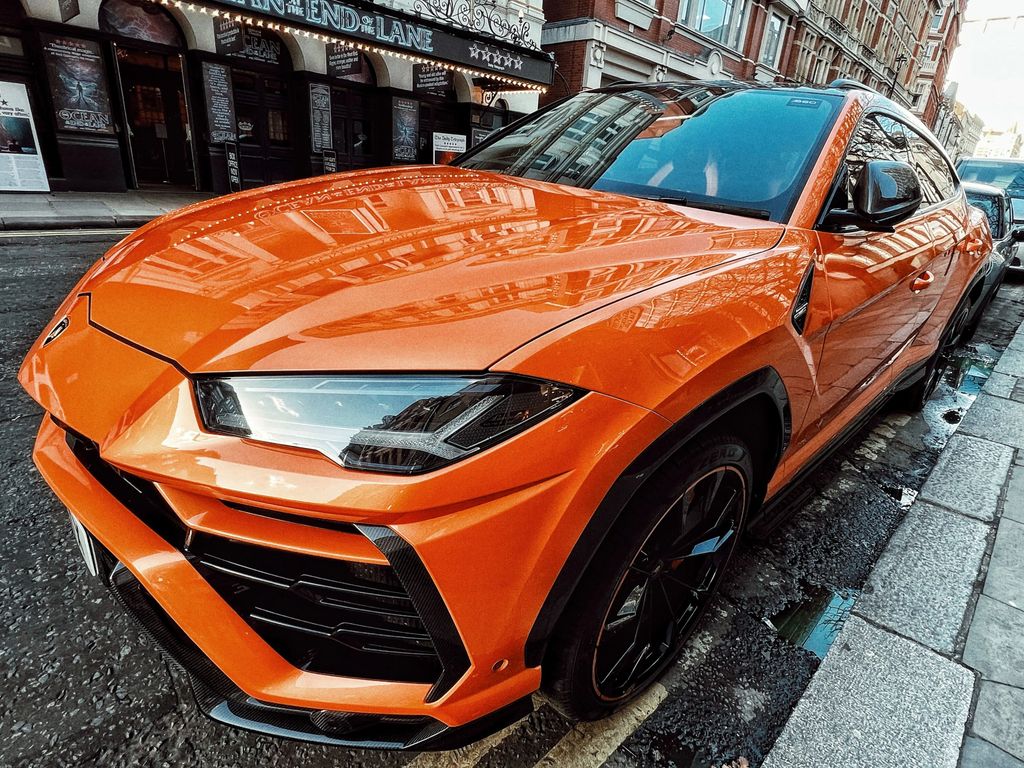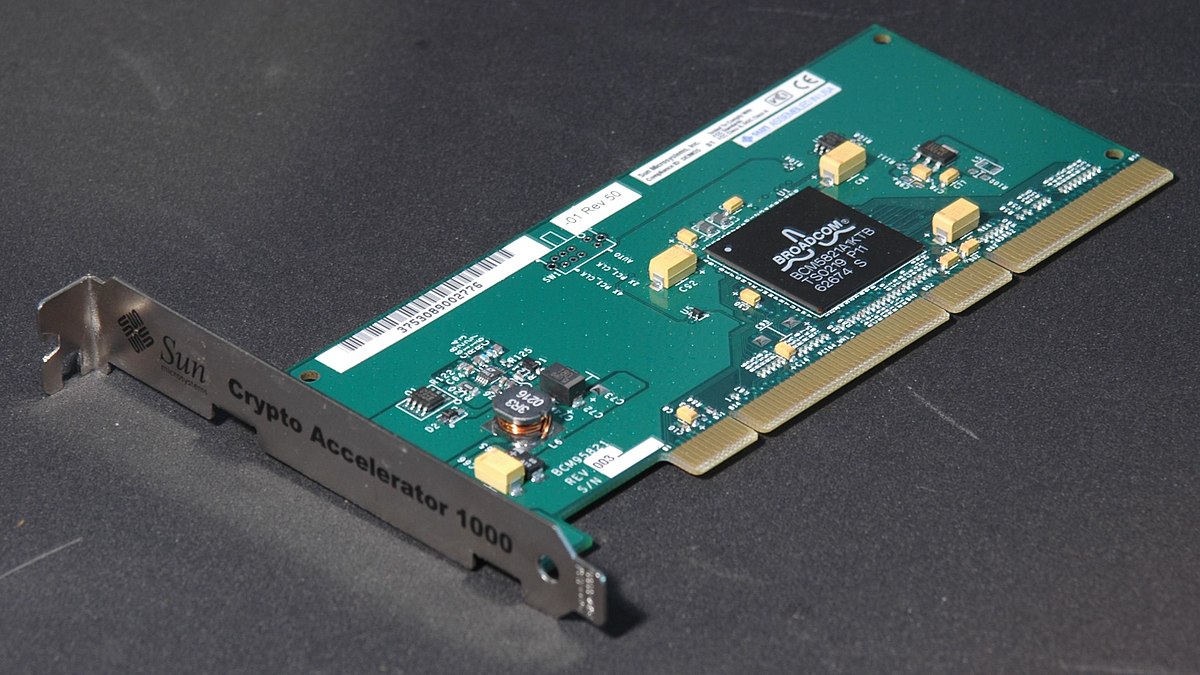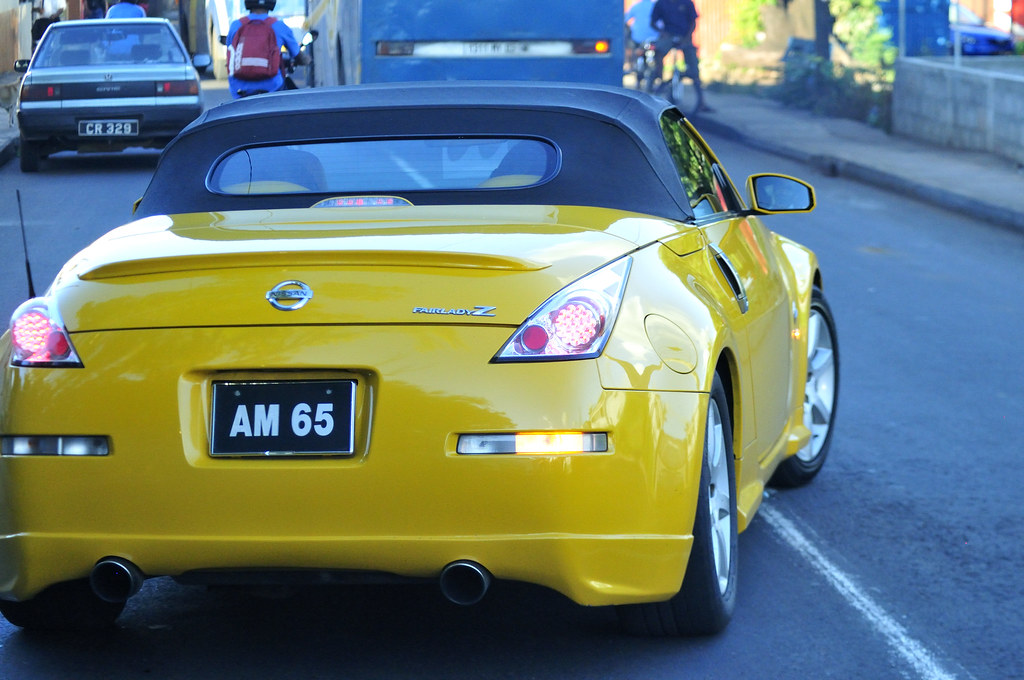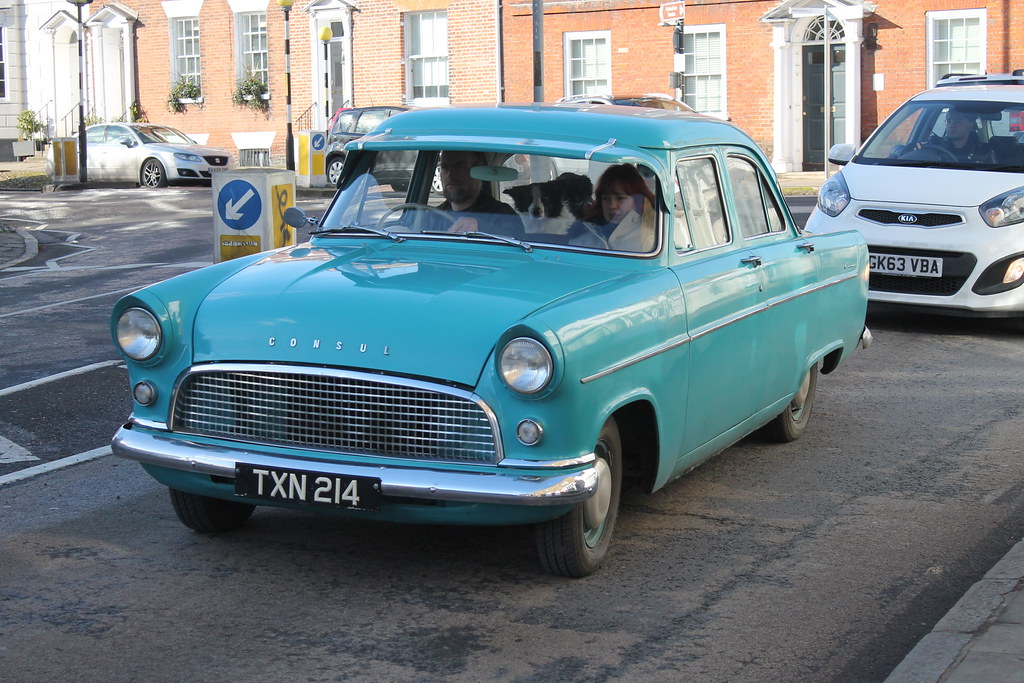
American muscle cars have long been synonymous with power, speed, and raw performance. These vehicles, built for enthusiasts who craved adrenaline-fueled driving experiences, dominated the automotive scene during the 1960s and 1970s. Indeed, in 1970, you had your choice of the Chevy Camaro SS 396 L78, the AMC AMX 390 Go-Pack, the Dodge Challenger 440 Six Pack, the Oldsmobile 442 W-30, the Shelby GT500, the Pontiac GTO Ram Air, the Mercury Cougar 428 Super Cobra Jet, the Buick GSX, and the Ford Mustang Boss 429, to name just a few. Some of these cars became legends, influencing car culture for generations to come, embodying a spirit of audacious engineering and unrestrained horsepower that captivated a nation.
The era was a golden age for automotive prowess, a period when American manufacturers, driven by a fierce competitive spirit known as the “Horsepower Wars,” pushed the boundaries of what was possible with internal combustion. Each model represented a unique blend of brute force, distinctive styling, and often, a surprising degree of everyday usability, defying the notion that high-performance cars had to be impractical. Today, these mechanical marvels continue to be revered by collectors and car enthusiasts alike, their roar a nostalgic echo of a time when the open road beckoned and every drive was an adventure.
From the pioneering machines that ignited the phenomenon to the highly specialized track weapons that blurred the lines between street and circuit, these automobiles are more than just vehicles; they are rolling pieces of history. They tell a story of innovation, passion, and an unyielding desire for speed. As we embark on a journey through the annals of American automotive excellence, we celebrate the engineering triumphs and cultural impact of the top American muscle cars ever built, each one a testament to the era’s commitment to power and performance.
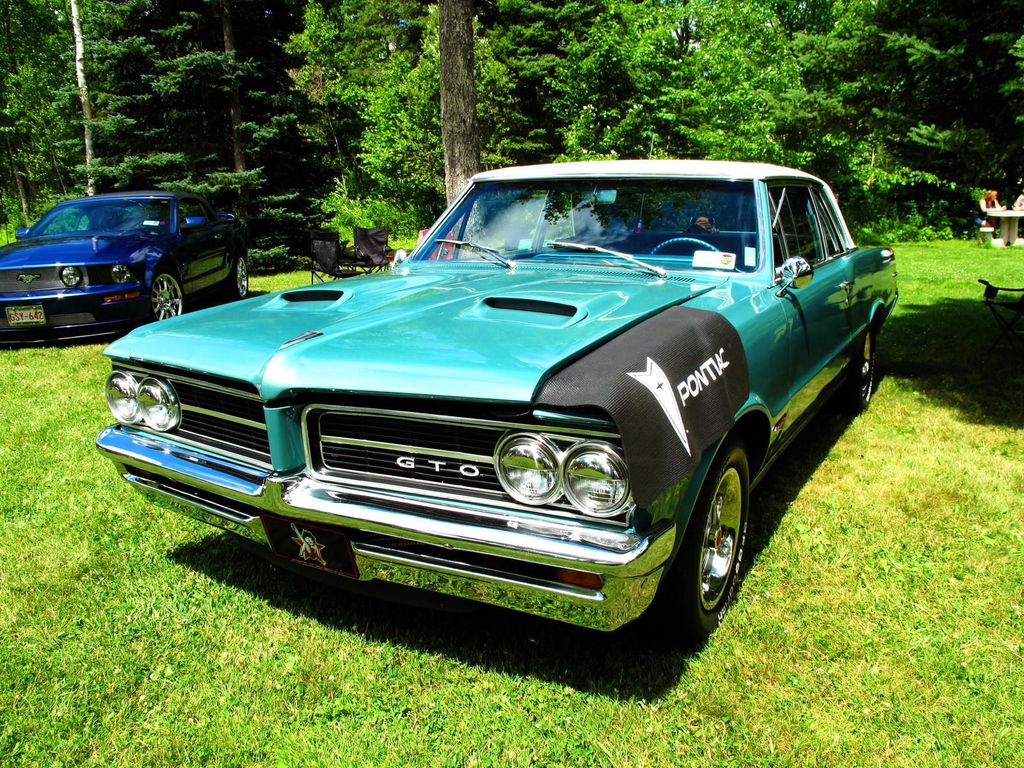
1. **1964 Pontiac GTO**The 1964 Pontiac GTO is often credited with starting the entire muscle car era, fundamentally shifting the automotive landscape by combining a potent 389-cubic inch V8 engine, delivering an impressive 325 horsepower, with an accessible price tag. This revolutionary approach made high-performance driving attainable for a broader audience, proving that a factory-built, street-legal car could deliver exhilarating power without commanding a luxury price point. Pontiac marketed the GTO as a performance vehicle designed for the street, blending speed with everyday usability.
Its sleek, aggressive design, characterized by a distinctive front grille and clean lines, immediately set it apart from other cars on the market. This visual identity perfectly communicated the car’s underlying power and intent, making it an instant hit with a generation eager for excitement on the asphalt. The monumental success of the 1964 GTO reverberated throughout the automotive industry, directly leading to the widespread proliferation of muscle cars in the 1960s and 1970s and inspiring countless models from other manufacturers.
Today, the 1964 GTO remains one of the most beloved and collectible muscle cars, a tangible link to the genesis of an automotive legend. Its historical significance, combined with its enduring performance credentials and timeless design, ensures its place in the pantheon of automotive greats. For many, it’s not just a car; it’s the very definition of American muscle.
Car Model Information: 1966 Pontiac GTO Coupe
Name: Pontiac GTO
Caption: 2005 Pontiac GTO
Manufacturer: Pontiac (automobile),Holden
Class: Mid-size car,Compact car,Mid-size car
Production: 1963–1974,2003–2006
Predecessor: Pontiac Tempest
Layout: Front-engine, rear-wheel-drive layout
ModelYears: 1964-1974 2004-2006
Categories: 1970s cars, 2000s cars, All articles with unsourced statements, Articles with short description, Articles with unsourced statements from October 2008
Summary: The Pontiac GTO is a front-engine, rear-drive, two-door, and four-passenger automobile manufactured and marketed by the Pontiac division of General Motors over four generations from 1963 until 1974 in the United States — with a fifth generation made by GM’s Australian subsidiary, Holden, for the 2004 through 2006 model years.
The first generation of the GTO is credited with popularizing the muscle car market segment in the 1960s. Some consider the Pontiac GTO to have started the trend with all four domestic automakers offering a variety of competing models.
For the 1964 and 1965 model years, the GTO was an optional package on the intermediate-sized Pontiac LeMans. The 1964 GTO vehicle identification number (VIN) started with 22, while the 1965 GTO VIN began with 237. The GTO was designated as a separate Pontiac model from 1966 through 1971 (VIN 242…). It became an optional package again for the 1972 and 1973 intermediate LeMans. For 1974, the GTO was an optional trim package on the compact-sized Ventura.
The GTO model was revived for the 2004 through 2006 model years as a captive import for Pontiac, a left-hand drive version of the Holden Monaro, itself a coupé variant of the Holden Commodore.
Get more information about: Pontiac GTO
Buying a high-performing used car >>>
Brand: Pontiac Model: GTO
Price: $59,991 Mileage: 4,408 mi.
Read more about: 7 Classic Powerhouses: Why These Vintage Muscle Cars Can Still Outmuscle a New Mustang GT
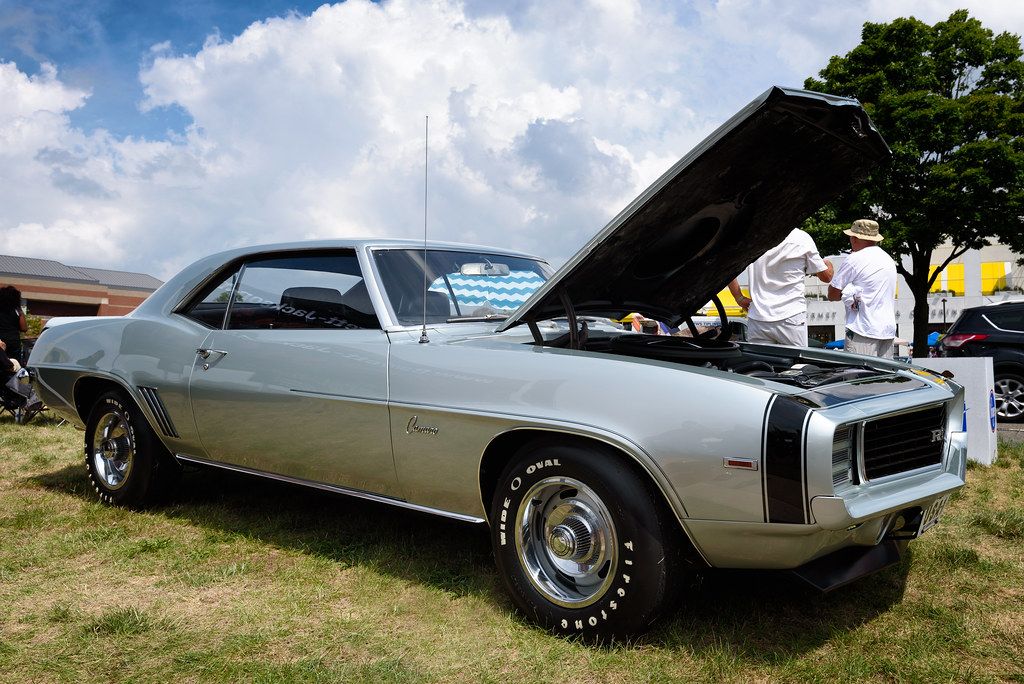
2. **1969 Chevrolet Camaro ZL1**Few muscle cars command as much reverence and mystique as the 1969 Chevrolet Camaro ZL1, primarily due to its extreme rarity with only 69 units ever produced. This severely limited production run instantly cemented its place as one of the most exclusive and sought-after vehicles in muscle car history, making it a true unicorn for collectors and enthusiasts worldwide. Each one was a special order, a bespoke beast for those in the know.
The heart of the ZL1’s formidable reputation was its incredible 427-cubic inch all-aluminum V8 engine. This marvel of engineering, a lightweight powerhouse, produced an astounding 430 horsepower. The all-aluminum construction was a significant technical achievement for its time, dramatically reducing the car’s overall weight and enhancing its power-to-weight ratio, translating directly into blistering performance. This Camaro variant was aimed squarely at racing enthusiasts, with its lightweight construction and immensely powerful engine making it a serious contender on the track.
Despite its raw, track-focused capabilities, the ZL1 was designed with a degree of everyday usability in mind, offering a surprisingly smooth ride for a high-performance vehicle. The 1969 Camaro ZL1 remains a top collector’s item, reflecting its unique place in automotive history and representing the pinnacle of Chevrolet’s engineering in the late 1960s, a no-compromise machine built for maximum speed and dominance.
Car Model Information: 2020 Kia Telluride S
Name: Chevrolet Camaro
Manufacturer: Chevrolet
Production: 1966–2002,2009–2023
ModelYears: 1967–2002,2010–2024
Class: Pony car
BodyStyle: coupe,convertible
Platform: GM F platform,GM Zeta platform,GM Alpha platform
Layout: Front-engine, rear-wheel-drive layout
Categories: 1970s cars, 1980s cars, 1990s cars, 2+2 coupés, 2000s cars
Summary: The Chevrolet Camaro is a mid-size American automobile manufactured by Chevrolet, classified as a pony car. It first went on sale on September 29, 1966, for the 1967 model year and was designed to compete with the Ford Mustang. The Camaro shared its platform and major components with the Firebird, produced by General Motors’ Pontiac division that was also introduced for the 1967 model year.
Four distinct generations of the Camaro were developed before production ended in 2002. The nameplate was revived on a concept car that evolved into the fifth-generation Camaro; production started on March 16, 2009.
Production of the sixth generation of the Camaro ended in December 2023, for the 2024 model year.
Get more information about: Chevrolet Camaro
Buying a high-performing used car >>>
Brand: Chevrolet Model: Camaro ZL1
Price: $20,988 Mileage: 88,231 mi.
Read more about: Beyond Their Time: 15 Legendary Muscle Cars That Still Command the Road
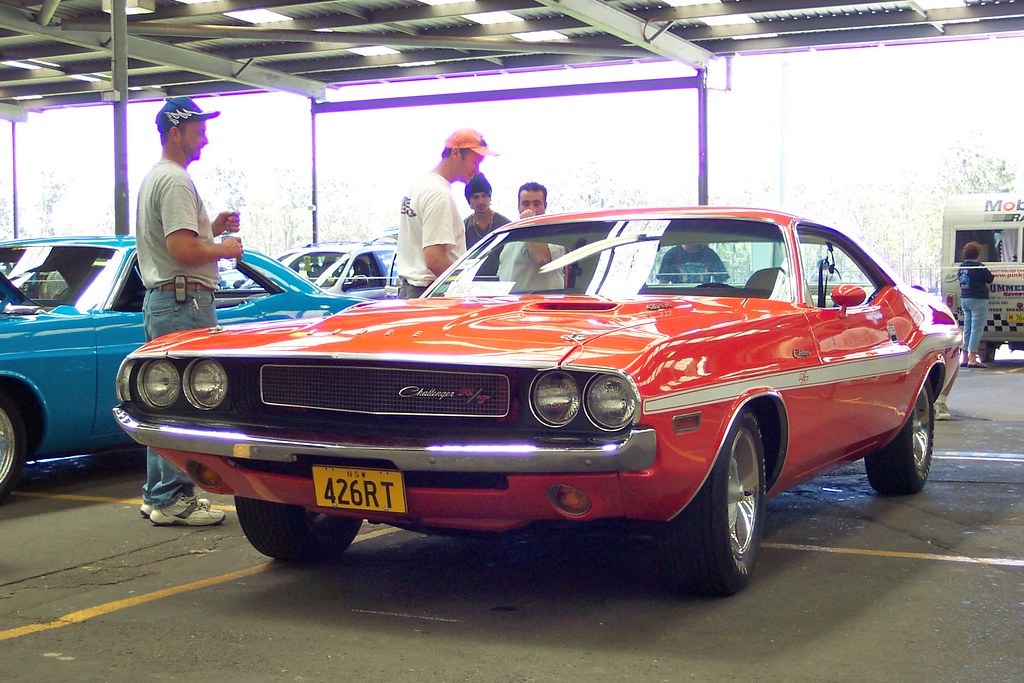
3. **1970 Dodge Challenger R/T**The 1970 Dodge Challenger R/T bursts onto the scene as one of the most iconic muscle cars ever produced, instantly recognizable for its audacious styling and uncompromising high-performance capabilities. This wasn’t merely a car; it was a statement, a bold declaration of Dodge’s intent to dominate the burgeoning muscle car market. Its arrival marked a significant chapter in the intense automotive rivalry of the era.
At its core, the Challenger R/T was powered by the legendary 426 HEMI V8 engine, a powerplant that remains synonymous with raw, unadulterated American horsepower. This monstrous engine unleashed an astonishing 425 horsepower, instantly making the Challenger a dominant force on both the street and the track. The R/T model, in particular, was a performance version that emphasized speed and handling.
The Challenger R/T’s aggressive design, characterized by its wide stance, low profile, and distinctive grille, made it one of the most visually striking cars of its time. Its sculpted lines and powerful presence captivated onlookers, quickly establishing it as a favorite among muscle car enthusiasts who craved a combination of raw power and eye-catching aesthetics. Despite only a few years of production, the Challenger set the stage for the muscle car wars of the 1970s.
Today, the 1970 Dodge Challenger R/T is a highly sought-after collector’s car, its value significantly amplified by the presence of the revered HEMI engine. Its enduring appeal lies in its perfect blend of historical significance, breathtaking power, and timeless design. For many, owning a 1970 Challenger R/T is to own a piece of automotive royalty, a testament to an era when American iron ruled the roads.
Car Model Information: 2020 Kia Telluride S
Name: Dodge Challenger (1970)
Production: 1969–1974
ModelYears: 1970–1974
Successor: ubl
Caption: 1970 Challenger R/T
Manufacturer: Dodge
Wheelbase: cvt
Length: cvt
Width: cvt
Height: cvt
Categories: 1970s cars, All articles lacking reliable references, All articles needing additional references, Articles lacking reliable references from November 2014, Articles needing additional references from April 2024
Summary: The Dodge Challenger is an automobile produced by American automobile manufacturer Dodge. The first use of the Challenger name by Dodge was in 1959 for marketing a “value version” of the full-sized Coronet Silver Challenger.
From model years 1970 to 1974, the first generation Dodge Challenger pony car was built using the Chrysler E platform in hardtop and convertible body styles sharing major components with the Plymouth Barracuda.
Get more information about: Dodge Challenger (1970)
Buying a high-performing used car >>>
Brand: Dodge Model: Challenger R/T
Price: $20,988 Mileage: 88,231 mi.
Read more about: A High-Octane Flashback: Unveiling 14 Iconic Cars That Revved Up the Unforgettable ’70s
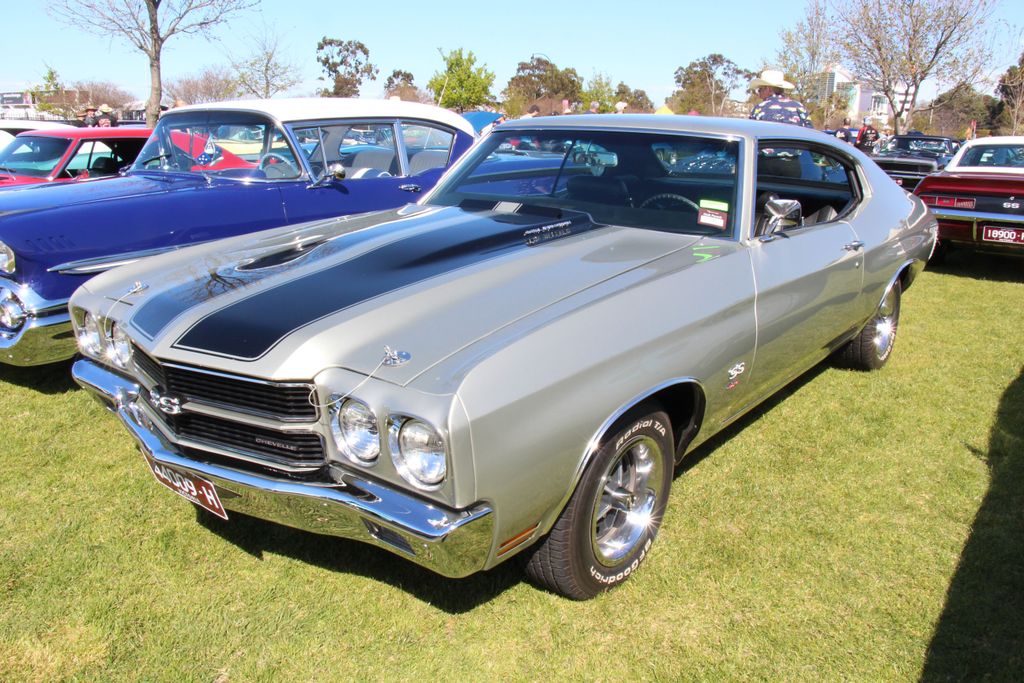
4. **1970 Chevrolet Chevelle SS 454 LS6**The 1970 Chevrolet Chevelle SS 454 LS6 is widely considered one of the most powerful muscle cars ever built, thanks to its monumental 454-cubic inch V8 engine. Specifically, the LS6 variant churned out an incredible, factory-rated 450 horsepower, an astonishing figure for a production car. The LS6 was the highest-performance option in the Chevelle lineup, offering exceptional acceleration and top speed, designed to dominate the asphalt with unparalleled authority.
With its bold, aggressive styling, the Chevelle SS quickly became an indelible symbol of American muscle. Its imposing presence, coupled with its large engine and potent performance capabilities, made it a standout on the road, easily outracing many competitors of its era. This visual embodiment of ferocity commanded respect from every angle.
Despite its raw power and elite performance, the Chevelle SS 454 was still an affordable muscle car, appealing to those seeking high performance without breaking the bank. Its undeniable success helped solidify Chevrolet’s position as a dominant leader in the muscle car market. The 1970 Chevelle SS 454 LS6 remains a timeless classic, passionately chased by enthusiasts and collectors today.
Car Model Information: 1969 Chevrolet Chevelle SS
Name: Chevrolet Chevelle
Caption: 1970 Chevrolet Chevelle SS 396 Sport Coupe
Manufacturer: Chevrolet
Production: 1963–1977
ModelYears: 1964–1977
Class: Mid-size
Platform: GM A platform (RWD)
Layout: FR layout
Successor: Chevrolet Malibu
Categories: 1970s cars, All articles needing additional references, All articles that may contain original research, All articles with specifically marked weasel-worded phrases, All articles with unsourced statements
Summary: The Chevrolet Chevelle is a mid-sized automobile that was produced by the Chevrolet division of General Motors (GM) in three generations for the 1964 to 1977 model years. Part of the GM A-body platform, the Chevelle was one of Chevrolet’s most successful nameplates. Body styles included coupes, sedans, convertibles, and station wagons. The “Super Sport” versions were produced through the 1973 model year and Lagunas from 1973 through to 1976.
After a four-year absence, the El Camino was reintroduced as part of the new Chevelle lineup in 1964.
From 1964 to 1969, GM of Canada sold a modified version of the Chevelle that included a Pontiac-style grille, and a LeMans instrument panel, marketed as the Beaumont.
The Malibu was the top-of-the-line model to 1972, and completely replaced the Chevelle nameplate starting with the redesigned, and downsized 1978 model year.
Get more information about: Chevrolet Chevelle
Buying a high-performing used car >>>
Brand: Chevrolet Model: Chevelle
Price: $119,550 Mileage: 93 mi.
Read more about: 7 Classic Powerhouses: Why These Vintage Muscle Cars Can Still Outmuscle a New Mustang GT
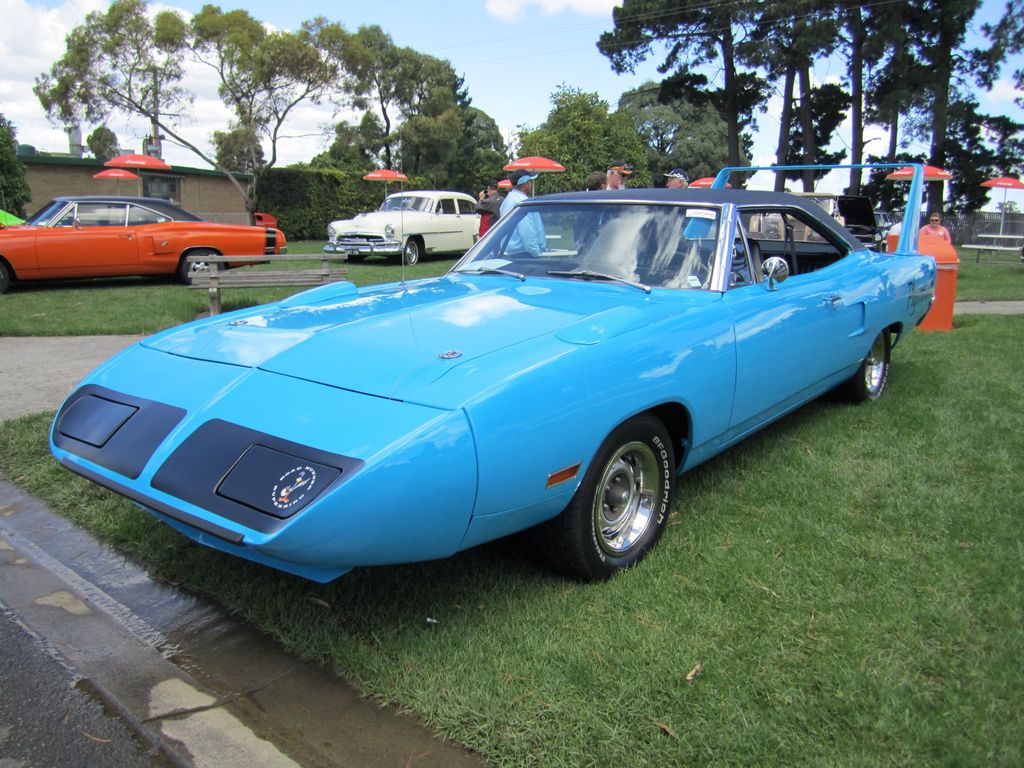
5. **1970 Plymouth Road Runner Superbird**The 1970 Plymouth Road Runner Superbird is instantly recognizable as a groundbreaking engineering marvel designed for NASCAR success. Its truly unique and radically aerodynamic design, featuring a massive rear wing to improve stability at high speeds and a distinctive long, pointed nose, set it dramatically apart from every other muscle car of the era. It was a vehicle born for the high-speed oval, a true visual icon.
Underneath its distinctive sheet metal, the Superbird was equipped with a powerful 440-cubic inch V8 engine, delivering thrilling performance both on the track and the street. Despite its pure racing pedigree, it was also engineered to be remarkably street-friendly, offering a comfortable ride and a high level of craftsmanship. This dual nature meant it could be enjoyed by enthusiasts on daily commutes, albeit with a noticeable presence.
The limited production run of only 1,920 units further enhances its mystique and makes it an exceptionally highly collectible vehicle today. Its legendary status in the world of muscle cars is cemented not just by its success on the NASCAR circuit, but also by its utterly unique place in automotive history, a testament to radical design in pursuit of ultimate speed.
Car Model Information: 2020 Kia Telluride S
Name: Plymouth Superbird
Manufacturer: Plymouth (automobile)
Wheelbase: 115.8 in
Abbr: on
Length: Convert
Width: 76.4 in
Height: 61.4 in
Weight: Convert
Production: 1970
Assembly: Detroit
Class: muscle car,race car
BodyStyle: coupe
Platform: Chrysler B platform
Layout: FR layout
Engine: cvt,Chrysler Hemi engine,V8 engine,cvt,Chrysler RB engine#440,V8 engine
Related: Plymouth Road Runner,Dodge Charger Daytona
Transmission: Automatic transmission,TorqueFlite
Designer: Gary Romberg
Categories: 1970s cars, All articles with unsourced statements, Articles with short description, Articles with unsourced statements from March 2010, Commons category link is on Wikidata
Summary: The Plymouth Superbird is a highly modified, short-lived version of the Plymouth Road Runner with applied graphic images as well as a distinctive horn sound, both referencing the popular Looney Tunes cartoon character Road Runner. It was the factory’s follow-up stock car racing design, for the 1970 season, to the Dodge Charger Daytona of 1969, and incorporated many engineering changes and modifications (both minor and major) garnered from the Daytona’s season in competition.
The car’s primary rivals were the Ford Torino Talladega and Mercury Cyclone, a direct response to the Mopar aero car. It has also been speculated that a motivating factor in the production of the car was to lure Richard Petty back to Plymouth. Both of the Mopar aero cars famously featured a protruding, aerodynamic nosecone, a high-mounted rear wing and, unique to the Superbird, a horn mimicking the Road Runner’s signature “beep, beep.”
Superbirds equipped with the top-of-the-line 426 cu in (7.0 L) Hemi engine with a pair of four barrel Carter AFB carburetors (2x4bbl) producing 425 hp (317 kW) could accelerate from 0 to 60 mph (97 km/h) in 5.5 seconds.
Get more information about: Plymouth Superbird
Buying a high-performing used car >>>
Brand: Plymouth Model: Road Runner Superbird
Price: $20,988 Mileage: 88,231 mi.
Read more about: Beyond Their Time: 15 Legendary Muscle Cars That Still Command the Road
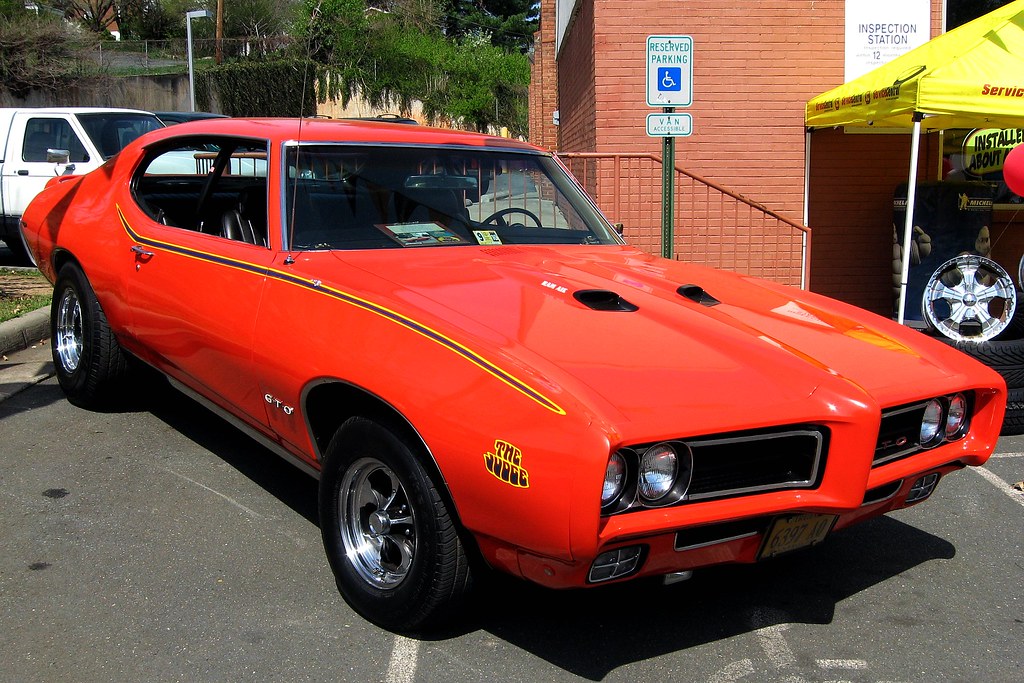
6. **1969 Pontiac GTO Judge**The 1969 Pontiac GTO Judge emerged as a highly performance-oriented variant of the already iconic GTO, specifically designed to fiercely compete within the rapidly expanding muscle car market. Under its hood, the Judge boasted a robust 400-cubic inch Ram Air III V8 engine, which delivered an impressive 366 horsepower, ensuring potent acceleration and a thrilling exhaust note. The model was designed with performance in mind, offering exceptional acceleration and handling.
The Judge was instantly recognizable for its bold styling, featuring a distinctive rear wing and vibrant, colorful graphics that set it unequivocally apart from other cars within the GTO lineup. Its aggressive visual package perfectly complemented its performance intentions, ensuring it stood out in any crowd and announced its presence with undeniable flair. Despite its focus on speed, it maintained the GTO’s comfort and daily usability, appealing to both street and track enthusiasts.
Marketed as a fun, yet affordable performance car, the 1969 GTO Judge successfully appealed to a wide audience. Today, the Judge remains one of the most desirable GTO models, its unique combination of formidable performance, unmistakable style, and relative rarity making it a highly prized collectible for enthusiasts worldwide. It’s a true classic that encapsulates the vibrant spirit of the late 60s muscle car scene.
Car Model Information: 1966 Pontiac GTO Coupe
Name: Pontiac GTO
Caption: 2005 Pontiac GTO
Manufacturer: Pontiac (automobile),Holden
Class: Mid-size car,Compact car,Mid-size car
Production: 1963–1974,2003–2006
Predecessor: Pontiac Tempest
Layout: Front-engine, rear-wheel-drive layout
ModelYears: 1964-1974 2004-2006
Categories: 1970s cars, 2000s cars, All articles with unsourced statements, Articles with short description, Articles with unsourced statements from October 2008
Summary: The Pontiac GTO is a front-engine, rear-drive, two-door, and four-passenger automobile manufactured and marketed by the Pontiac division of General Motors over four generations from 1963 until 1974 in the United States — with a fifth generation made by GM’s Australian subsidiary, Holden, for the 2004 through 2006 model years.
The first generation of the GTO is credited with popularizing the muscle car market segment in the 1960s. Some consider the Pontiac GTO to have started the trend with all four domestic automakers offering a variety of competing models.
For the 1964 and 1965 model years, the GTO was an optional package on the intermediate-sized Pontiac LeMans. The 1964 GTO vehicle identification number (VIN) started with 22, while the 1965 GTO VIN began with 237. The GTO was designated as a separate Pontiac model from 1966 through 1971 (VIN 242…). It became an optional package again for the 1972 and 1973 intermediate LeMans. For 1974, the GTO was an optional trim package on the compact-sized Ventura.
The GTO model was revived for the 2004 through 2006 model years as a captive import for Pontiac, a left-hand drive version of the Holden Monaro, itself a coupé variant of the Holden Commodore.
Get more information about: Pontiac GTO
Buying a high-performing used car >>>
Brand: Pontiac Model: GTO
Price: $59,991 Mileage: 4,408 mi.
Read more about: The True Kings of the Road: 15 Muscle Cars That Defined an Era
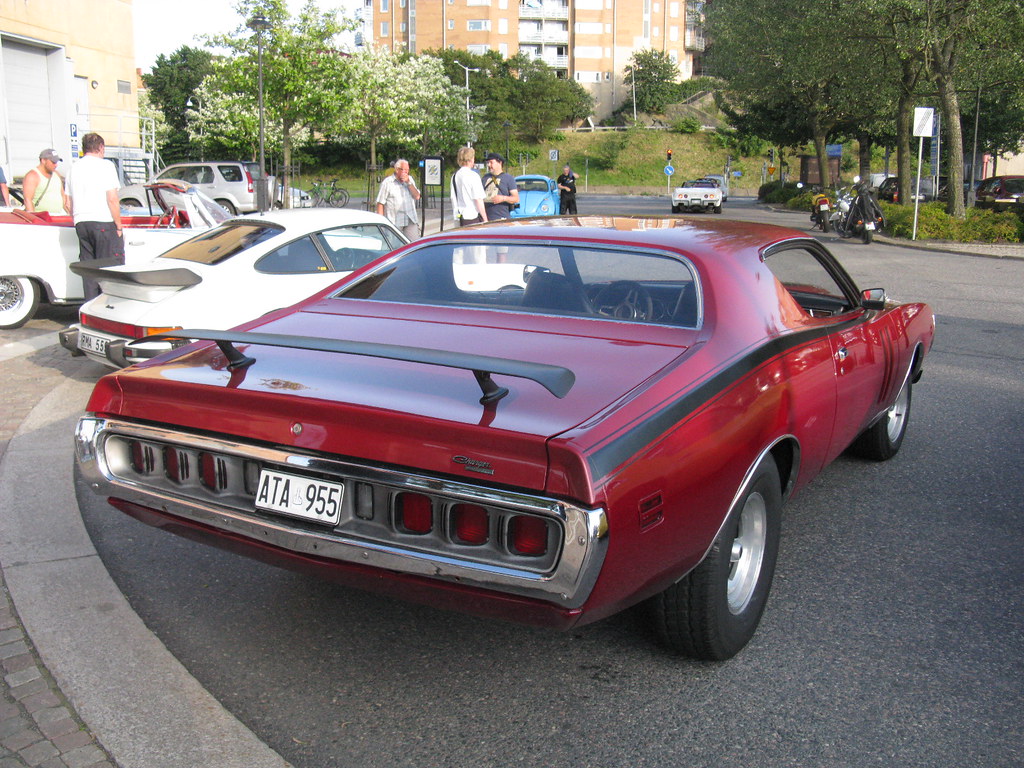
7. **1969 Dodge Charger R/T 440**The 1969 Dodge Charger R/T 440 stands as an enduring icon of the 1960s muscle car era, celebrated universally for its aggressively sculpted styling and profoundly powerful performance. Powering this legendary machine was a robust 440-cubic inch V8 engine, which produced a formidable 375 horsepower, making it one of the most powerful cars of its time. The R/T trim package was the performance version of the Charger, providing superior handling, braking, and speed.
The Charger’s distinctive wide stance and sleek, curvaceous body design gave it an unparalleled commanding presence on the road. Its interior offered comfort and style, a testament to Dodge’s commitment to delivering a complete package. It quickly became a fan favorite, particularly thanks to its prominent role in the TV show The Dukes of Hazzard, which only amplified its appeal and cemented its place in pop culture.
Despite its widespread fame, the 1969 Charger R/T 440 remains an exceptionally elusive collector’s car, highly prized for its rarity, iconic status, and undeniable charisma. Today, it is one of the most sought-after muscle cars from the late 1960s, a true American legend that continues to captivate hearts with its blend of power, style, and cultural significance.
Car Model Information: 2023 Dodge Charger SRT Hellcat Widebody Jailbreak
Name: Dodge Charger
Caption: 1969 Dodge Charger
Manufacturer: Dodge
Production: 1966–1978,1981–1987,2005–present
ModelYears: 1966–1978,1982–1987,2006–present
Categories: 1960s cars, 1970s cars, 1980s cars, 2000s cars, 2010s cars
Summary: The Dodge Charger is a model of automobile marketed by Dodge in various forms over eight generations since 1966.
The first Charger was a show car in 1964. A 1965 Charger II concept car resembled the 1966 production version.
In the United States, the Charger nameplate has been used on mid-size cars, personal luxury coupes, subcompact hatchbacks, and full-size sedans.
Get more information about: Dodge Charger
Buying a high-performing used car >>>
Brand: DODGE Model: Charger
Price: $94,975 Mileage: 4,260 mi.
Read more about: 7 Classic Powerhouses: Why These Vintage Muscle Cars Can Still Outmuscle a New Mustang GT
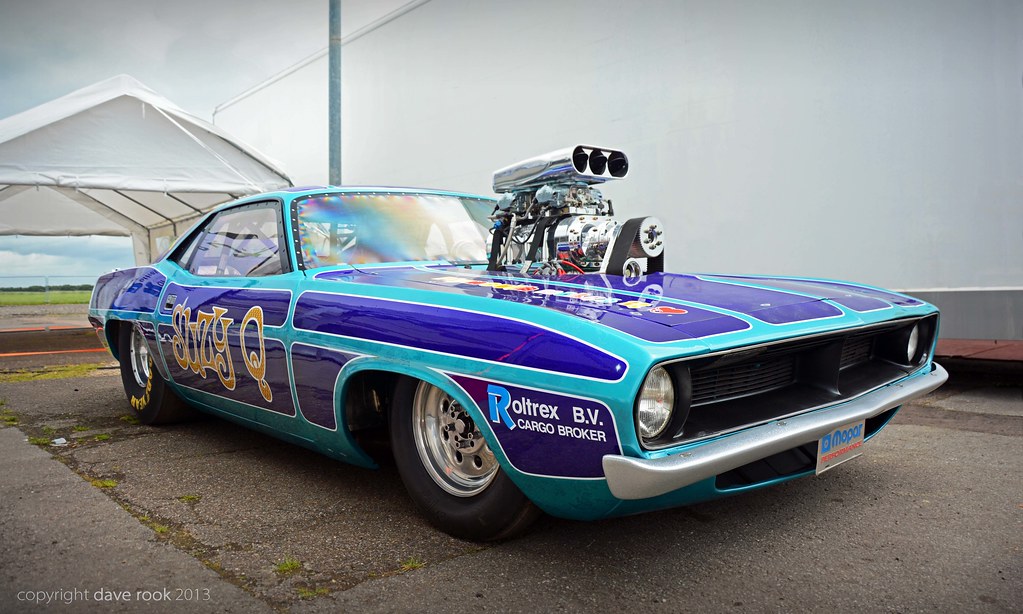
8. **1970 Plymouth Barracuda**The 1970 Plymouth Barracuda remains one of the most memorable muscle cars of its era, marking a significant evolution from its humble beginnings as a “warmed-over Valiant” in 1964. By 1970, with a redesigned body and a suite of powerful engine options, it transformed into a prototypical American performance car, ready to challenge the dominance of rivals. This transformation proved that Plymouth was not merely chasing trends but setting them, delivering a vehicle that combined both aggressive aesthetics and raw power in equal measure.
At the very pinnacle of the muscle car pyramid stands the Plymouth ‘Cuda, especially when equipped with the legendary 426 HEMI engine. This monstrous powerplant delivered an astonishing 425 horsepower, instantly establishing the Barracuda as a serious competitor in the fiercely contested muscle car market. While many Barracudas sported either a 340 cubic-inch small-block or a de-stroked 305 cubic-inch V8 for the AAR (Trans-Am) series, the big guns truly belonged to the cars with the 440 cubic-inch V8 or the even rarer 426 cubic-inch Hemi.
The car’s sleek, aggressive lines and compact body contributed to its unique appearance, ensuring it stood out among its contemporaries. With its potent engine and performance-focused design, the Barracuda was unequivocally built for speed and exceptional handling, offering an exhilarating driving experience. This dedication to both form and function allowed it to carve a distinct niche within a crowded field of high-performance vehicles.
The 1970 model year also holds a special place, as it was the last for the original Barracuda body style, significantly enhancing its collectibility today. Its pivotal role in automotive history, combined with its powerful engine options and timeless design, has cemented the Barracuda’s place in the muscle car hall of fame. Collectors and enthusiasts alike continue to value the 1970 Barracuda, particularly the Hemi variants, for their rarity and breathtaking performance, with a mere handful of Hemi-powered coupes (about 652 made) and an almost mythical 14 convertibles, only five of which were equipped with a 4-speed manual transmission.
Car Model Information: 1971 Plymouth Barracuda
Caption: 1970 Hardtop Coupe
Name: Plymouth Barracuda
Manufacturer: Plymouth (automobile)
Production: 1964–1974
Assembly: Fenton, Missouri,Hamtramck, Michigan,Maywood, California,Windsor, Ontario
Layout: Front-engine, rear-wheel drive layout
Class: Pony car
Categories: 1970s cars, All articles with dead external links, All articles with unsourced statements, Articles with dead external links from February 2018, Articles with dead external links from January 2022
Summary: The Plymouth Barracuda is a two-door pony car that was manufactured by Chrysler Corporation from 1964 through 1974 model years.
The first-generation Barracuda was based on the Chrysler A-body and was offered from 1964 until 1966. A two-door hardtop (no B-pillar) fastback design, it shared a great majority of parts and bodywork with the Plymouth Valiant, except for the distinctive wraparound rear glass.
The second-generation Barracuda, though still Valiant-based, was heavily redesigned. Built from 1967 through 1969, it was available as a two-door in fastback, notchback, and convertible versions.
The third generation, offered from 1970 until 1974, was based on the Chrysler E-body, exclusive to it, and the slightly larger Dodge Challenger. A completely new design, the two-door Barracuda was available in hardtop and convertible body styles.
Get more information about: Plymouth Barracuda
Buying a high-performing used car >>>
Brand: Plymouth Model: Barracuda
Price: $54,999 Mileage: 12,468 mi.
Read more about: The Smart Money’s Secret: 8 Undervalued Classic Cars Experts Say Are Poised for Significant Appreciation
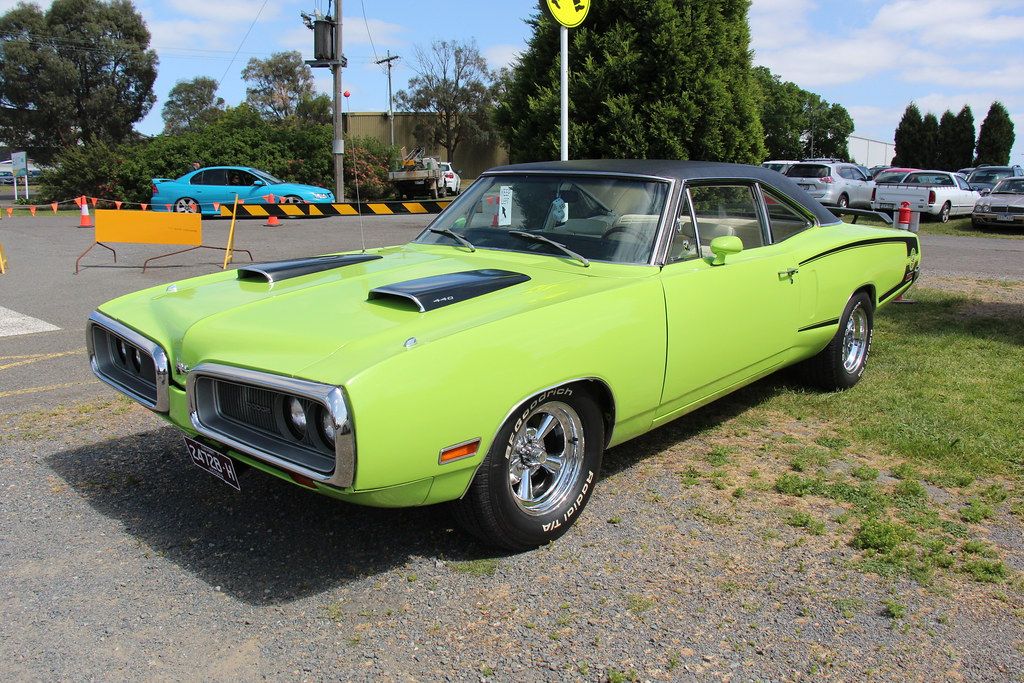
9. **1970 Dodge Super Bee**Emerging as a formidable high-performance version of the Dodge Coronet, the 1970 Dodge Super Bee was engineered specifically to unleash a potent assault on the muscle car market. It embodied the very essence of Mopar’s commitment to raw power and street credibility. Powering this exceptional machine was the celebrated 426 HEMI V8 engine, an engineering marvel that churned out 425 horsepower, providing a truly thrilling performance experience on both the street and the drag strip.
The Super Bee made an immediate visual impact with its bold styling, characterized by a distinctive stripe and an assertive rear wing, ensuring it was a standout among the myriad of muscle cars of its time. Its aggressive aesthetic was not just for show; it communicated the car’s underlying purpose and capability, appealing directly to those who craved both speed and a distinctive look. This wasn’t a car for the faint of heart; it was a clear statement of intent.
Crucially, the Super Bee was designed for enthusiasts who desired raw power without having to break the bank, making high-octane performance more accessible. This blend of affordability and outright performance quickly made it a popular choice among a wide array of performance fanatics. Despite its aggressive design and track-oriented capabilities, the Super Bee surprisingly maintained a degree of practicality, offering comfort and usability for everyday driving.
Today, the 1970 Dodge Super Bee is rightfully considered one of the most iconic American muscle cars. Its combination of a powerful engine and its relatively limited production numbers have made it a highly collectible vehicle, consistently sought after by enthusiasts and collectors of classic muscle cars. It stands as a testament to an era when Dodge pushed the boundaries of performance and design, keeping the “Dodge flame alive” with machines that delivered unadulterated excitement.
Car Model Information: 2020 Kia Telluride S
Name: Dodge Super Bee
Manufacturer: Chrysler Corporation
Production: 1968–1971 , 1970–1980 (Mexico only) , 2007–2009 , 2012–2013
Layout: FR layout
Class: Muscle car
Caption: 1969 Dodge Coronet Super Bee A12 “Six Pack”
Categories: 1960s cars, 1970s cars, All articles needing additional references, All articles with dead external links, All articles with unsourced statements
Summary: The Dodge Super Bee is a mid-sized muscle car marketed by Dodge, that was produced for the 1968 through 1971 model years.
In Mexico, the Super Bee was based on a compact-sized Chrysler platform and marketed from 1970 until 1980.
The Super Bee model name was resurrected for the 2007, 2008, 2009, 2012, and 2013 Dodge Charger Super Bee models.
Get more information about: Dodge Super Bee
Buying a high-performing used car >>>
Brand: Dodge Model: Super Bee
Price: $20,988 Mileage: 88,231 mi.
Read more about: The Smart Money’s Secret: 8 Undervalued Classic Cars Experts Say Are Poised for Significant Appreciation
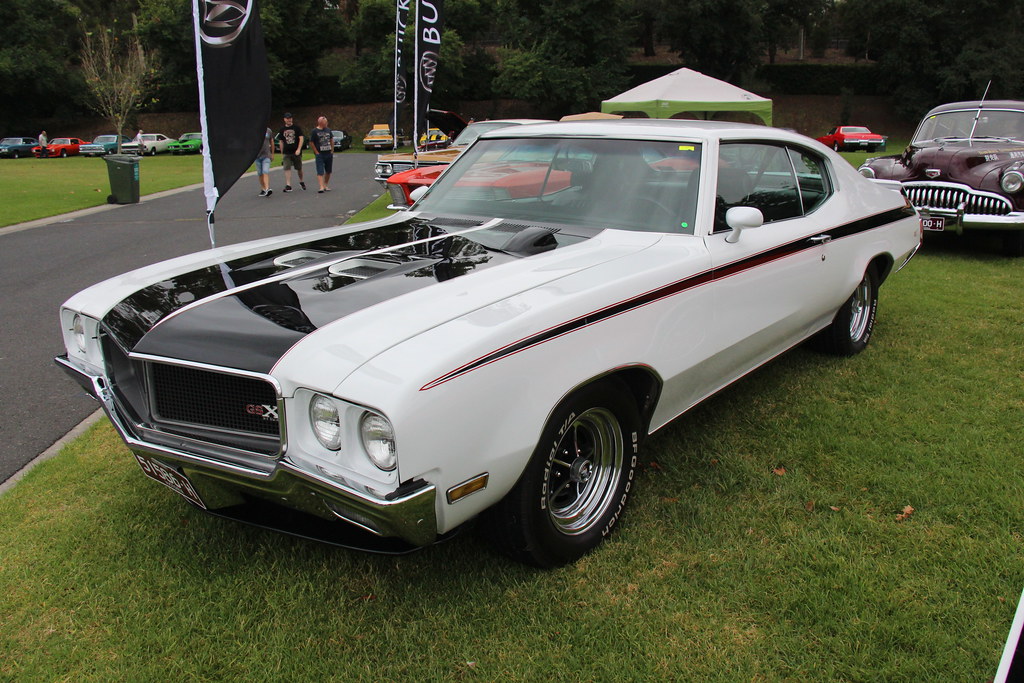
10. **1970 Buick GSX**The 1970 Buick GSX arrived on the scene as a true performance car, meticulously designed to go head-to-head with the era’s most potent muscle cars. It was, in essence, the “Skylark Grand Sport on steroids,” elevating the already athletic coupe to new heights of power and prestige. Equipped with a massive 455-cubic inch V8 engine, the GSX produced a robust 360 horsepower, firmly establishing itself as one of the most powerful and luxurious vehicles in Buick’s illustrious lineup.
What truly set the GSX apart was its distinctive and instantly recognizable styling, featuring a unique black-and-yellow paint job and bold graphics. This eye-catching aesthetic ensured it commanded attention wherever it went, visually declaring its performance intentions with unmistakable flair. Unlike some of its more brutish competitors, the GSX offered a comfortable and remarkably refined interior, demonstrating that high-performance didn’t have to come at the expense of luxury and everyday usability.
The GSX was Buick’s emphatic answer to formidable rivals such as the Chevrolet Chevelle SS and the Plymouth Road Runner, presenting a unique and compelling combination of brute force and sophisticated luxury. Its 455 cubic-inch V8 engine, particularly in its most powerful configuration, pumped out a hair-raising 350 horsepower and an astounding 510 lb-ft of torque. This torque figure would stand as a record for an American production vehicle until the Dodge Viper burst onto the scene decades later.
Today, the Buick GSX is a rare and exceptionally desirable muscle car, highly prized by collectors for its potent performance, luxurious features, and distinctive styling. The fact that the car was originally offered in only two captivating colorways – Saturn Yellow or Apollo White, both accented with striking black racing stripes – only added to its allure and exclusivity. Its unique blend of power, style, and limited availability makes it an undeniable standout in the world of classic muscle cars.
Read more about: A High-Octane Flashback: Unveiling 14 Iconic Cars That Revved Up the Unforgettable ’70s

11. **1968 Chevrolet Camaro Z/28**The 1968 Chevrolet Camaro Z/28 carved out a special place in automotive history as a performance-focused version of the already immensely popular Camaro, conceived and engineered primarily to dominate the highly competitive Trans-Am racing series. This dedication to motorsport infused the Z/28 with a formidable pedigree right from its inception. It featured a specialized 302-cubic inch V8 engine, meticulously designed to meet homologation requirements, which produced an impressive 290 horsepower, with some experts suggesting figures closer to 350 horsepower, delivering an impressive 1.15 horsepower per cubic inch.
Beyond its potent engine, the Z/28 was equipped with a bespoke suspension and advanced handling features, purposefully crafted to make it an exceptionally capable track car. Its sleek design and comprehensive performance upgrades made it an immediate standout within the broader Camaro lineup, captivating both dedicated racing enthusiasts and general performance fans. The car’s lightweight construction and aggressive styling further contributed to its competitive edge, ensuring its prowess on both the track and the street.
The Z/28’s remarkable success in the demanding world of racing played a crucial role in solidifying the Camaro’s reputation as one of America’s most beloved and capable muscle cars. This purpose-built machine, more expensive than a standard Camaro by about $400, featured a 4-speed manual transmission and front-wheel power disc brakes, with conveniences like power steering and air conditioning intentionally left behind at the factory to maximize performance.
Today, the 1968 Camaro Z/28 remains an exceptionally highly sought-after collector’s item, its rich racing heritage and formidable performance capabilities making it a prized possession for those who appreciate pure automotive engineering. With just over 28,000 units built between 1967 and 1969, it stands as an enduring symbol of Chevrolet’s engineering prowess and unwavering commitment to high-performance in the late 1960s.
Car Model Information: 2020 Kia Telluride S
Caption: 1968 Camaro RS 327
Name: Chevrolet Camaro (first generation)
Manufacturer: Chevrolet
Production: September 29, 1966 – November 1969
ModelYears: 1967–1969
Assembly: Van Nuys Assembly,Norwood Assembly,Caracas,Lima,Antwerp,Biel/Bienne,Manila
Successor: Chevrolet Camaro (second generation)
Class: Pony car,Muscle car
BodyStyle: hardtop,convertible
Layout: FR layout
Platform: GM F platform
Related: Pontiac Firebird (first generation)
Engine: {{convert,230,cuin,L,1,abbr=on,Chevrolet Turbo-Thrift engine#230,Straight-six engine
Abbr: on (MY1969)
Transmission: Manual transmission,4-speed manual,Semi-automatic transmission,automatic transmission,3-speed automatic
Wheelbase: 108 in
Length: 184.7 in
Width: {{convert,72.5,in,mm,0,abbr=on
Height: {{convert,51.4,in,mm,0,abbr=on
Designer: Henry Haga
Categories: All articles with specifically marked weasel-worded phrases, All articles with unsourced statements, Articles with short description, Articles with specifically marked weasel-worded phrases from February 2025, Articles with unsourced statements from June 2025
Summary: The first-generation Chevrolet Camaro is an American pony car introduced by Chevrolet in the fall of 1966 for the 1967 model year. It used a brand-new rear-wheel-drive GM F-body platform and was available as a 2-door, 2+2 seat, hardtop, and convertible. The F-body was shared with the Pontiac Firebird for all generations. A 230 cu in Chevrolet straight-6 was standard, with several Chevy V8s available as options. The first-generation Camaro was built through the 1969 model year.
Almost all of 1967–1969 Camaros were built in the two U.S. assembly plants: Norwood, Ohio, and Van Nuys, California. There were also five non-U.S. Camaro assembly plants in countries that required local assembly and content. These plants were located in the Philippines, Belgium, Switzerland, Venezuela, and Peru.
Get more information about: Chevrolet Camaro (first generation)
Buying a high-performing used car >>>
Brand: Chevrolet Model: Camaro Z/28
Price: $20,988 Mileage: 88,231 mi.
Read more about: Ignition Roar & Asphalt Dreams: The 8 Iconic Chevy Muscle Cars Every Enthusiast Should Know
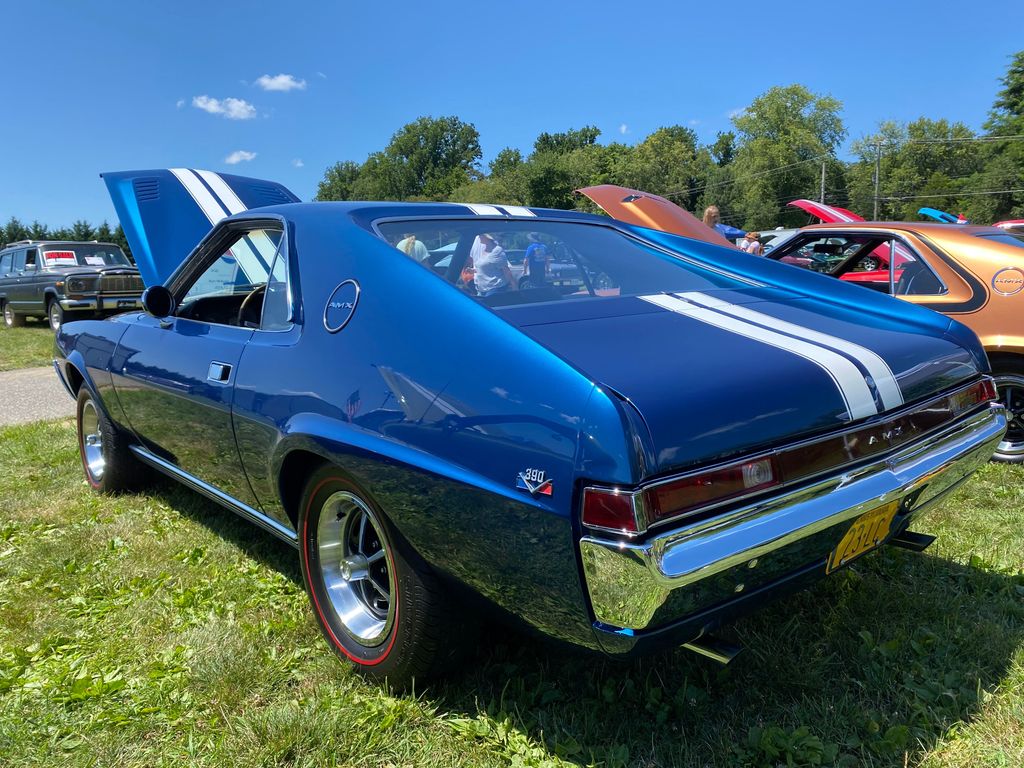
12. **1969 AMC AMX**The 1969 AMC AMX represented a truly unique and distinctive entry into the muscle car market, boldly departing from the conventional by offering a genuine two-seater sports car design imbued with unmistakable muscle car performance. This innovative approach carved a niche for American Motors Corporation, providing an alternative to traditional, larger muscle offerings. Powered by a robust 390-cubic inch V8 engine, the AMX produced a potent 315 horsepower, delivering impressive acceleration and exhilarating speed, often paired with a 4-speed manual transmission.
Distinctively, the AMX was smaller and lighter than most of its competitors, a characteristic that translated directly into a more nimble and agile driving experience on the road. Despite its more compact dimensions, it surprised many by offering a remarkably comfortable interior along with features that were quite modern for its time. The AMX’s unique design and undeniable performance-focused nature quickly made it a favorite among discerning car enthusiasts who actively sought something truly different from the typical muscle car offerings.
Indeed, if any muscle car remains a best-kept secret, the first-generation AMC AMX is a prime candidate, with fewer than 20,000 units made between 1968 and 1970. It was the only American two-seat sports car available at the time, apart from the Chevrolet Corvette, even boasting a wheelbase one inch shorter than the ‘Vette’s, yet coming in at about $1,000 less expensive. Handling, rather than just brute-force straight-line speed, was truly the name of the game for this spirited machine.
Today, the AMC AMX is a rare and highly collectible vehicle, passionately appreciated for its singular design, impressive performance, and significant historical context. Its secure place in muscle car history ensures it remains a sought-after model among collectors who value innovation and a departure from the mainstream. The AMX stands as a vibrant testament to AMC’s audacious spirit in a fiercely competitive era.
Read more about: Untamed Powerhouses: The 1960s Muscle Cars That Shattered Conventions and Forged a Legacy of Speed
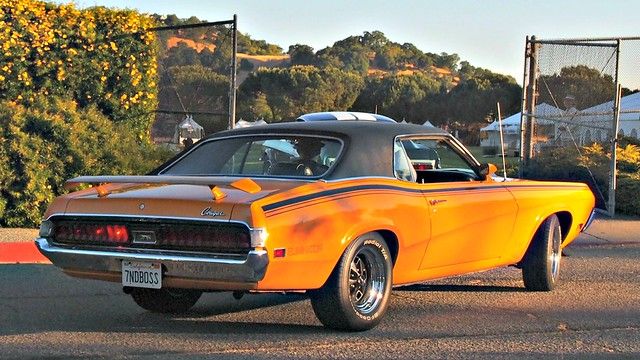
13. **1970 Mercury Cougar Eliminator**The 1970 Mercury Cougar Eliminator was a performance-oriented tour de force, meticulously engineered to directly challenge formidable rivals like the Mustang Mach 1 and the Chevrolet Camaro Z/28 in the heated muscle car wars. It showcased Mercury’s commitment to not leaving all the high-performance fun to its parent company, Ford. Beneath its sleek hood, the Eliminator featured a mighty 428-cubic inch Cobra Jet V8 engine, a powerhouse capable of producing an exhilarating 335 horsepower, or even more, making it an incredibly potent contender on any road.
The Cougar Eliminator’s sleek design, combined with its distinctive styling cues, gave it a unique and commanding presence on the road. This visual aggression was matched by a comprehensive suite of performance upgrades, including a sportier suspension and enhanced handling capabilities, transforming it into a remarkably capable track car. The Eliminator package itself was a testament to Mercury’s intent, equipping the Cougar with all the necessary tools for spirited driving.
Despite its undeniable performance focus and track-ready enhancements, the Cougar Eliminator ingeniously managed to retain the Cougar’s signature luxury features. This thoughtful balance of comfort and raw power offered enthusiasts the best of both worlds: blistering performance wrapped in a refined package. Its brawny 428 Super Cobra Jet V-8, which generated an exhilarating 400 hp, ensured it could more than hold its own against any competitor.
Today, the 1970 Mercury Cougar Eliminator is recognized as a rare and exceptionally desirable find, with collectors eagerly seeking to own one of these powerful, stylish, and often underrated muscle cars. Its sophisticated combination of luxury, uncompromising performance, and inherent rarity solidifies its status as a standout and truly iconic model in the celebrated world of classic American muscle cars.
Car Model Information: 2020 Kia Telluride S
Name: Mercury Cougar
Caption: 1969 Mercury Cougar (first generation)
Manufacturer: Mercury (automobile)
Layout: Front-engine, rear-wheel-drive layout
ModelYears: 1967–1997,1999–2002
Class: Pony car,Personal luxury car,Mid-size car,Sport compact
Categories: 1960s cars, 1970s cars, 1980s cars, 1990s cars, 2000s cars
Summary: The Mercury Cougar is a series of automobiles that was sold by Mercury from 1967 to 2002. The model line is a diverse series of vehicles; though the Cougar nameplate is most commonly associated with two-door coupes, at various stages in its production, the model also was offered as a convertible and a hatchback. During its production as the mid-size Mercury line, the Cougar was also offered as a four-door sedan and five-door station wagon.
In production for 34 years across eight generations (skipping the 1998 model year), the Cougar is second only to the Grand Marquis (36 years) in the Mercury line for production longevity. 2,972,784 examples were produced, making it the highest-selling Mercury vehicle. During the 1970s and 1980s, the marketing of the Mercury division was closely associated with the Cougar, with promotional materials advertising Mercury dealers as “The Sign of the Cat” with big cats atop Lincoln-Mercury dealer signs. Cat-related nameplates were adopted by other Mercury lines, including the Bobcat and Lynx.
During its production, the Cougar was assembled at the Dearborn Assembly Plant (part of the Ford River Rouge Complex) in Dearborn, Michigan from 1967 until 1973, San Jose Assembly (Milpitas, California) from 1968 into early 1969, Lorain Assembly (Lorain, Ohio) from 1974 until 1997, and at Flat Rock Assembly (Flat Rock, Michigan) from 1999 through 2002.
Get more information about: Mercury Cougar
Buying a high-performing used car >>>
Brand: Mercury Model: Cougar Eliminator
Price: $20,988 Mileage: 88,231 mi.
Read more about: Boomer Dreams, Millennial Doubts: Why These 14 Classic Cars Spark a Generational Divide
As we bring our journey through the annals of American muscle to a close, it’s clear that these machines are far more than mere aggregations of steel and horsepower. They are vibrant artifacts of an era defined by bold engineering, unbridled ambition, and a relentless pursuit of performance. Each car on this list, from the pioneering GTO to the luxurious yet fierce Cougar Eliminator, tells a captivating story of innovation and passion, reflecting a golden age where the rumble of a big-block V8 was the soundtrack to the American dream. Their enduring appeal, their collectibility, and the sheer joy they inspire in enthusiasts worldwide are testaments to a legacy that continues to roar on, forever etched into the heart of automotive history. These aren’t just cars; they are legends on wheels, reminding us that sometimes, the most thrilling experiences come from pushing the limits, one powerful, tire-smoking mile at a time. This era, perhaps more than any other, crafted automotive icons that still ignite our imaginations and remind us of the glorious symphony of American engineering at its most audacious.

